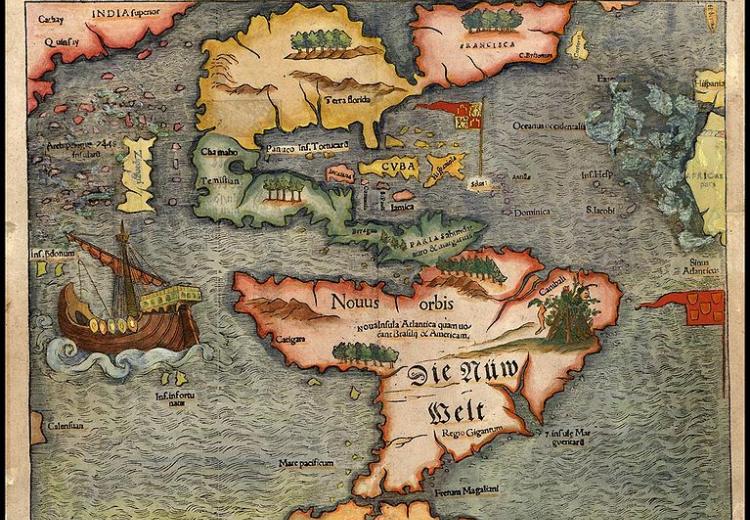Images of the New World

Sebastian Munster's "Map of America" (1561)
"I have thought that I could find no better occasion to declare it, than taking the pains to cut in copper (the most diligently and well that was in my possible to do) the Figures which do lovely represent the form and manner of the Inhabitants of the same country with their ceremonies, solemne feasts, and the manner and situation of their Towns, or Villages. Adding unto every figure a brief declaration of the same, to that end that every man could the better understand that which is in lively represented."
—From a 1590 letter from Theodor de Bry to Sir Walter Raleigh—A Brief and True Report of the New Found Land of Virginia
How did the English picture the native peoples of America during the early phases of colonization of North America? Where did these conceptions come from and how accurate were they? How much influence did they have on the subsequent development of relations between the two groups?
In addition, how do you get people to move to a faraway, largely unknown, and potentially dangerous locale? What are the instruments of encouragement and motivation that one might provide? This was the challenge facing the supporters of the English effort to colonize Virginia at the start of the 17th century.
In this lesson, students will analyze the visual and literary visions of the New World that were created in England at this time, and the impact they had on the development of the patterns of colonization that dominated the early 17th century.
This lesson will enable students to interact with written and visual accounts of this critical formative period at the end of the 16th century, when the English view of the New World was being formulated, with consequences that we are still seeing today.
Guiding Questions
What motives did the English have for describing and depicting native people and their lands prior to and after arriving in the New World?
Learning Objectives
Analyze visual and literary images and the role they played in the English colonization of Virginia.
Evaluate the importance of Thomas Harriot's Report on the subsequent development of English colonial plans for Virginia.
Analyze the connection between Harriot's text and the images that John White and Theodor de Bry created.
Evaluate how John Smith's written and cartographic descriptions of Virginia shape the colony's development.
